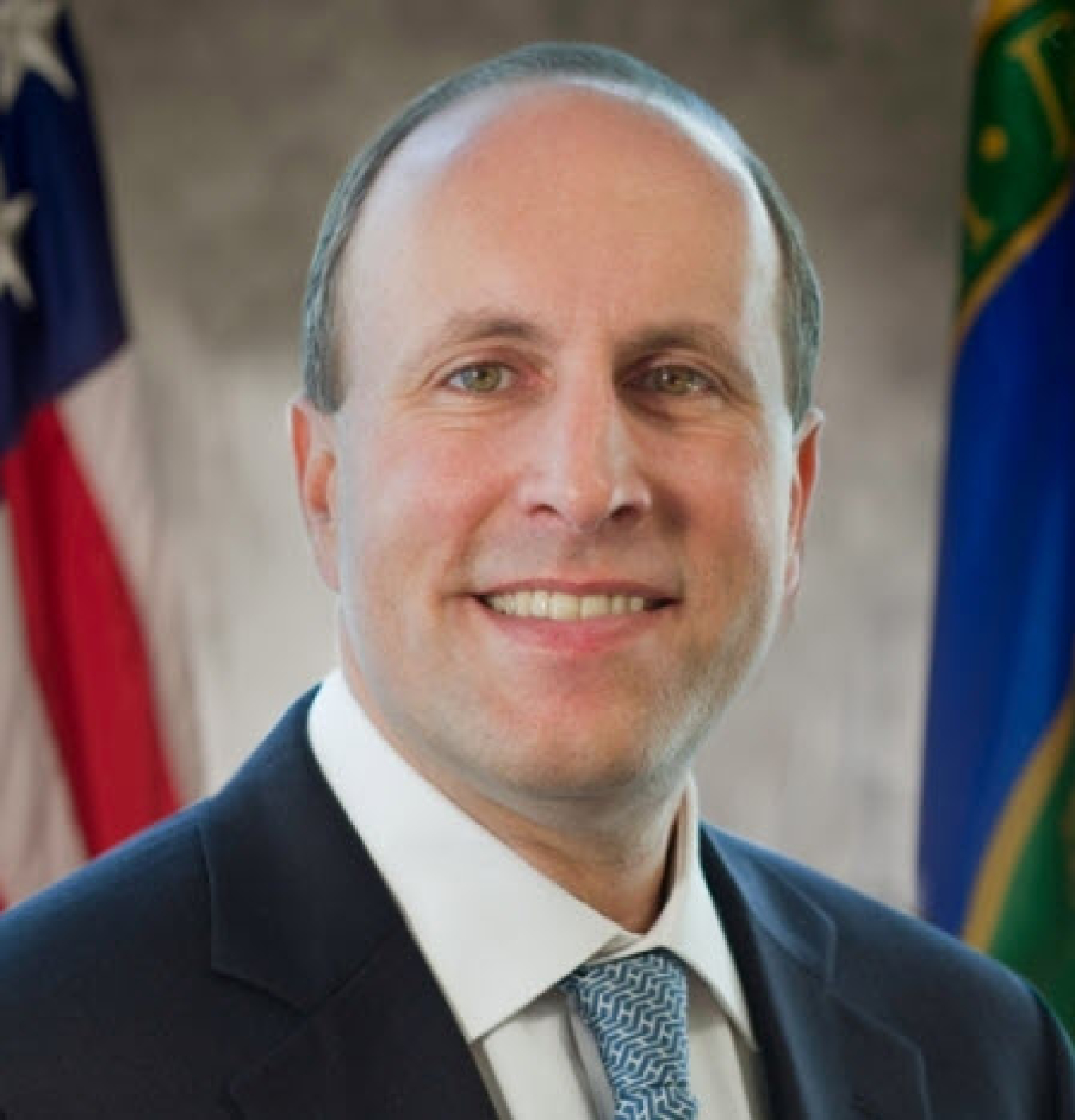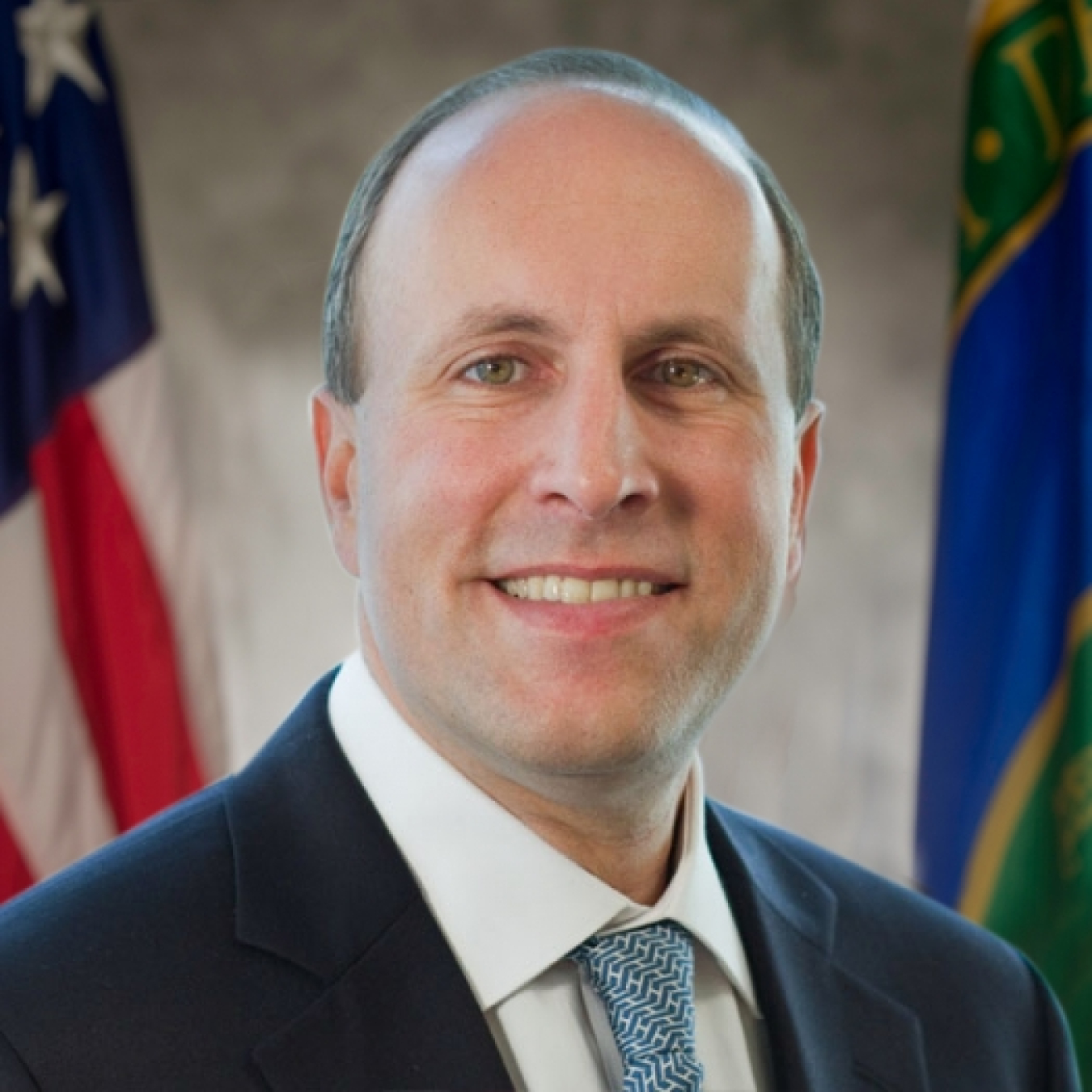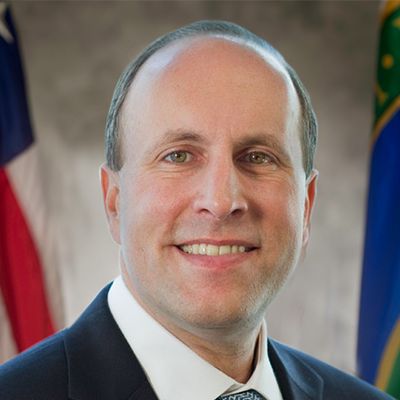Farewell remarks from Paul M. Dabbar, Under Secretary of Science
January 14, 2021
Paul M. Dabbar, Under Secretary for Science
As this cycle closes, I will be moving on from the Department and return to being with my family in New York. It has been my great honor to serve as the fourth Under Secretary for Science on behalf of the American people with my colleagues, the employees at the Department of Energy, the National Lab Complex, and the communities we support around the country and world.
I have been honored to be a part of the storied history of this Department and Complex. The prospects for the “Department of Exploration” have never been stronger.
After serving part-time on a DOE advisory committee, I came as Under Secretary to work with communities and institutions that existed before we were born, and will exist long after we are gone. I have enjoyed being part of a team striving to add something to these communities and institutions and hand them off a little better than when we arrived.
I would like to thank Secretaries Perry and Brouillette and Deputy Secretary Menezes for their trust in me to help lead a significant portion of the Department and the Complex.
I also express my gratitude to the leaders of offices in my organization, including Directors Chris Fall, Conner Prochaska, Carmelo Melendez, and Cheryl Ingstad, as well as Senior Advisor Ike White and Principal Deputy Assistant Secretary Todd Shrader for their leadership and partnership. And I thank those in my immediate office on whose support I have relied, including Deputy Under Secretary T.L. Cubbage, Chief of Staff Kristen Ellis, Jeremy Ison, Anthony Giannetti, Sabrina Smith, Sheronne Millington-Price, Miki Carver, and Mark Gilbertson.
I wish to express my appreciation as well to all 60,000 colleagues across the National Lab Complex, where I have been regular visits around the country. The Complex is the most important organization for discovery and innovation in the history of humankind, and your initiative and passion were evident in every interaction with me. In particular, I would like to thank all 17 National Lab Directors for their partnership on a long list of items.
Very importantly, I must emphasize my gratitude for the dedicated career members of the Department. The ranks of this Department are filled with professionals with deep knowledge of our disciplines, who are committed and diligent. I have appreciated the opportunity to work with you daily for nearly four years.
The Department has achieved many great objectives while I have been serving as Under Secretary. Here are some of the accomplishments of which we are particularly proud:
1. Completing many complex science and nuclear projects, including commissioning of the #1 and 2 supercomputers in the world, the CEBAF upgrade at Jefferson Lab, the DESI telescope detector in Arizona, our contribution to the Mars Perseverance Rover, the Tonopah test range transfer, the Salt Waste Processing Facility at Savannah River, and the facilities for the long-awaited DFLAW treatment plant at Hanford.
2. Achieving near completion on many other projects (with some COVID delays), including FRIB at Michigan State University, the Rubin telescope in Chile, three forthcoming exascale supercomputers, the LCLS II upgrade at SLAC, the IWTU at the Idaho cleanup project, and recovery of the NSTX-U at PPPL.
3. Accomplishing project goals ahead of schedule and/or under budget, including completion of the K Reactor basin project at Hanford, commissioning of the Summit supercomputer at ORNL, commissioning of the SWPF, completion of decommissioning the ETTP site at Oak Ridge (4 years ahead of schedule, with $500 million in life cycle savings), and commencement of demolition at the ETEC site in California. As many of you have heard me say, we are getting mission done, and we are getting it done well.
4. Obtaining the largest support in appropriations ever for our missions, rising to over $14.5 billion per annum, including increases since my arrival of 32% for the Office of Science to put to use through the Complex and grant programs (the largest percentage increase of any federal science agencies during this time), of 14% for the Environmental Management mission, and of nearly 100% for technology commercialization for the Department.
5. Advancing major science infrastructure across the complex by starting and accelerating construction, including projects that had been in planning for over a decade. These efforts include the Electron Ion Collider at Brookhaven (the first new collider in the U.S. in decades); our country’s leading high energy physics facility, LBNL/DUNE, at FermiLab; the LCLS II and High Energy upgrades at SLAC; the Exascale Computer Program facilities; the APS and ALS light source upgrades at Argonne Lab and LBNL; the CMB-S4 at South Pole Station, and the Spallation Neutron and MPEX fusion facilities at ORNL. America’s premier status in discovery science and technology gained significant ground during these past four years.
6. Adopting important new contracting structures, especially by commencing a wave of contracting that will allow the continued acceleration of mission across the Environmental Management complex. In addition to pursuing new end-state contract structures for certain cleanup work, we recently announced a new management structure of Savannah River National Lab to enhance its impact in discovery, innovation, national security, and collaboration with academia.
7. Increasing significantly the efforts to commercialize innovations arising from the Complex, including appointing the first DOE Chief Commercialization Officer, commencing the Innovation XLab summit series, launching the Lab Partnering Service resources, nurturing initiatives with regional business development organizations, and supporting the Energy I-Corps, Technology Commercialization Fund, and space commercialization efforts.
8. Helping to usher through significant legislation in Congress, including the Energy Act of 2020, new authorizing legislation for the Office of Science and the Complex and the National Quantum Initiative Act.
9. Developing and implementing new policy based upon an interpretation of the statutory definition of high level waste that is based on science and radiochemistry rather than exclusive consideration of waste materials’ origin. This new approach could ultimately accelerate cleanup of several communities by decades, and its first demonstration to remove material from a DOE site for final disposition in an out-of-state commercial facility was accomplished by EM in only a matter of months.
10. Commencing several new research and development efforts, including the Energy Storage Grand Challenge, National Quantum Initiative, National Virtual Biotechnology Lab, and Artificial Intelligence for Science initiative.
11. In particular, I would like to point out the success of the National Quantum Initiative efforts. During my tenure, the Department has embraced the efforts of the National Photonics Initiative, engaged early on the drafting of the NQI Act, provided testimony (including mine) before the Senate to advocate for the Act’s passage, secured full funding from Congress, awarded the five centers under the Act, and stood up the national advisory board on the NQI. Those centers encompass 69 participants from the Complex, academia, and the private sector, from 22 states and two foreign countries, who are contributing $340 million for the effort on top of the $625 million to be provided by DOE under the Act. This nearly $1 billion investment in research is the largest single topic research program at DOE, building off of decades of leadership in physics, materials, and computer sciences. These efforts also led to the development and rollout of the Quantum Internet Blueprint.
12. Several recent Nobel Prizes were awarded to researchers whose work had been supported by the Department. DOE and National Lab support led to Nobel Prizes recognizing work on black holes, lithium ion battery chemistry, and gene editing/CRISPR Cas-9 technology. DOE has now supported 118 Nobel Prizes over the years, the largest list of any organization globally. Lawrence Berkeley National Lab is running out of streets to name for its Nobel laureates.
13. Opening of the new Artificial Intelligence and Technology Office, building momentum for the coordination and leveraging of AI capabilities across the Department and Complex.
14. Increasing awareness of the National Lab accomplishments and capabilities, through activities such as regional National Lab Days, the XLab series, and engagement with a cross-section of industries, universities, and regional economic development groups. We also highlighted the contributions the Complex had made to national projects in science and technology, such as the Manhattan Project, the Apollo Program, the Digital Revolution, and the Human Genome Project. These efforts have led to significant economic and technological advances for the U.S. and the world.
15. Joining cross-agency discovery and technology development efforts across the U.S. government. These efforts were led by OSTP at the White House including the Industries of the Future initiative, the first standing joint senior leadership NASA/DOE committee, and regular joint meetings between DOE, NSF and NIST leaders (including a joint visit to our facilities at South Pole Station). In particular, I thank OSTP Director Kelvin Droegemeier, U.S. CTO Michael Kratsios, NASA Administrator Jim Bridenstine, NIST Under Secretary Walt Copan, and NSF Directors France Cordova and Sethuraman “Panch” Panchanathan for working effectively (and enjoyably) with me.
16. Deepening significant international collaboration in many fields of discovery and innovation. With our enhanced resources, DOE has been able to increase its support for CERN facilities and future collider plans, contribute additional support for the Rubin telescope and ITER, complete the Belle 2 detector, and attract international support for LBNL/DUNE and the upcoming EIC. We also welcomed participants from many countries into our COVID HPC Consortium including the UK, Japan, the EU, and Switzerland.
17. Contributing to the global response to COVID. We successfully transitioned operations in the Department and Complex to address the occupational health challenges. We leveraged significant national labs efforts to support COVID drug discovery and other response efforts using computational biology, AI, and imaging capabilities. And the Secretary and Department leadership managed the significant impact on energy supply and economics of the energy industry resulting from the global pandemic.
18. Accelerating innovations in energy technology, with record investment through the Complex as well as grants to universities and the private sector. Examples in this arena include launch of the Energy Storage Grand Challenge, advancement of several new solar technologies, and significantly increased efforts in both fission and fusion energy. During this Administration, lithium ion batteries for grid scale deployment has gone from a concept to reality in the form of base-load scale grid deployment in the United States.
19. U.S. became a Net Energy exporter. Since we arrived, due in part to the technology innovation supported over time by the Department and the Complex, the U.S. became a net energy exporter for the first time since the 1950s. The Department was established in 1978 in large part to address insufficient U.S. energy supplies that created significant economic and national security challenges. American innovation, supported by the Department, led to the stunning recent reversal of that circumstances, while concurrently driving down costs, increasing efficiency, creating U.S. jobs, and leading the world in emissions reductions. Finally, from my previous military service, I have understood how our national security policy is shaped by our global energy exposure and I greatly appreciate how our improved energy supply posture may reduce the need for current service members to be sent into harm’s way.
20. Addressing research integrity and security issues, arising from the actions of rival nations that do not share the standards of integrity, reciprocity, and fairness adopted by ourselves and our collaborative research allies. Such rivals have undertaken sophisticated efforts to misappropriate research ideas and data. The Department and Complex have developed and implemented policies to address these efforts through new policies concerning disclosure and management of conflicts of interest. I have appreciated the support of our other federal agency partners in these efforts.
21. Promoting a new Fusion Energy Strategy. We have been pleased to have played a role in driving the development of a more inclusionary and cohesive Fusion Energy community for the U.S., which has been executed through the broad Community Planning Process. In doing so, we have brought the dynamic private sector fusion efforts closer to the DOE and academic communities and set the stage for exciting new developments in this field.
I certainly encourage the future leadership of these programs to build on all these successes. As I join the ranks of DOE alumni, I am grateful that I have benefited from and built upon the successful efforts and ongoing advice of my three predecessors, Ray Orbach, Steve Koonin, and Lynn Orr, as well as former Deputy Secretary Dan Poneman.
America is pushed forward by those on the frontier, and my colleagues at the Department and Complex do that every day.
To my remaining colleagues and the future leadership of DOE: fair winds and following seas. I stand relieved. You have the watch.
Paul M. Dabbar
Paul M. Dabbar

The Honorable Paul M. Dabbar served as the Department’s fourth Under Secretary for Science, He served as the Department’s principal advisor on fundamental energy research, energy technologies, and science, driving this mission through programs including nuclear and high energy particle physics, basic energy, advanced computing, fusion, and biological and environmental research, and direct management over a majority of the Department’s national labs and their world-leading user facilities. In addition, Mr. Dabbar managed the environmental and legacy management missions of the Department, addressing the U.S. legacy of nuclear weapons production and government-sponsored nuclear energy research. In addition, Mr. Dabbar is the lead for technology commercialization activities for the Department and its 17 national labs.
During his time in government service, Mr. Dabbar has traveled to both the North and South Poles. He traveled to the North Pole by submarine to conduct environmental research while in the Navy, and to the South Pole in support of high energy physics astronomy missions by the Department at South Pole Station.
Prior to confirmation as Under Secretary for Science, Mr. Dabbar worked in operations, finance, and strategy roles in the energy sector. As a Managing Director at J.P. Morgan, leading various energy business areas, he has over $400 billion in investment experience across all energy sectors including solar, wind, geothermal, distributed-generation, utility, LNG, pipeline, oil & gas, trading, and energy technologies, and has also led the majority of all nuclear transactions. In addition, he had a senior leadership role for the company’s commodity trading business, including power, oil and gas.
Before joining J.P. Morgan, Mr. Dabbar served as a nuclear submarine officer in Mare Island, California, and Pearl Harbor, Hawaii. He also served on the Department of Energy Environmental Management Advisory Board. He has been a lecturer at the U.S. Naval Academy, and conducted research at the Johns Hopkins University Applied Physics Laboratory. He is also a member of the Council on Foreign Relations.
Mr. Dabbar received a B.S. degree from the U.S. Naval Academy, and a masters degree from Columbia University. Mr. Dabbar and his wife, Andrea, are the parents of two children.


